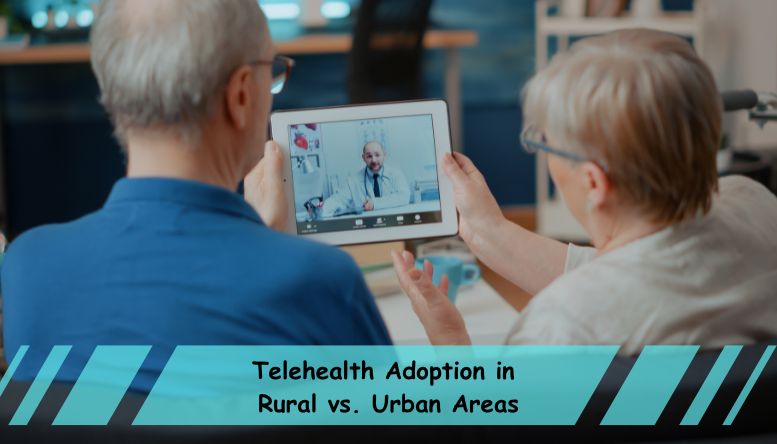The evolution of telehealth has revolutionized healthcare delivery in the United Kingdom, providing a viable solution to the persistent challenge of healthcare accessibility. As the NHS and private healthcare providers increasingly adopt digital health technologies, the disparity in healthcare access between rural and urban areas remains a critical concern. Telehealth offers a promising avenue to bridge this gap, ensuring that patients, regardless of their location, receive timely and effective medical care. However, the adoption of telehealth varies significantly between rural and urban settings, each presenting unique opportunities and challenges.
The State of Telehealth in the UK
Telehealth, defined as the use of digital information and communication technologies to provide healthcare services remotely, gained significant traction during the COVID-19 pandemic. The NHS and private healthcare providers quickly adapted to telehealth to minimize in-person interactions and reduce the spread of the virus. This shift not only maintained continuity of care but also underscored the potential of telehealth to improve healthcare delivery throughout the UK.
While telehealth has seen widespread adoption in urban areas, its implementation in rural regions has been slower and fraught with challenges. The reasons for this disparity are multifaceted, ranging from technological infrastructure and digital literacy to healthcare workforce distribution.
Urban Areas: Leading the Way in Telehealth Adoption
Urban areas in the UK, particularly cities like London, have been at the forefront of telehealth adoption. Several factors contribute to this trend, including:
1. Technological Infrastructure: Urban areas generally have better internet connectivity and access to advanced digital technologies, which are essential for the effective implementation of telehealth services. The availability of high-speed broadband and 4G/5G networks enables seamless video consultations, remote monitoring, and the use of mobile health applications.
2. Digital Literacy: The population in urban areas is generally more tech-savvy, with higher digital literacy rates. This familiarity with digital tools facilitates the adoption of telehealth, as patients and healthcare providers are more comfortable using online platforms for consultations and follow-ups.
3. Healthcare Workforce Availability: Urban areas are home to a larger number of healthcare professionals, including those employed through healthcare recruitment agencies in London. These agencies are essential in staffing telehealth services, helping to ensure there are sufficient healthcare providers to meet the growing demand. The presence of healthcare recruitment agencies in London also makes it easier to find and place qualified professionals in telehealth roles, contributing to the efficient delivery of remote care.
4. Patient Demand: In cities like London, where agency nurse jobs are abundant, there is a growing demand for flexible healthcare solutions that accommodate busy urban lifestyles. Telehealth offers a convenient alternative to traditional in-person visits, allowing patients to receive care without the need to travel, wait in queues, or take time off work.
Challenges in Urban Telehealth Adoption
Despite the advantages, telehealth adoption in urban areas is not without challenges. The sheer volume of patients in densely populated areas can strain telehealth systems, leading to longer wait times for virtual consultations. Additionally, there is the issue of digital inequality, even within urban settings, where certain populations may lack access to the necessary technology or the skills to use it effectively.
Rural Areas: The Struggle for Telehealth Adoption
Rural areas in the UK face significant challenges in adopting telehealth services, which exacerbate existing healthcare disparities. The primary barriers include:
1. Limited Technological Infrastructure: Rural areas often suffer from poor internet connectivity, with many regions still lacking access to high-speed broadband or reliable mobile networks. This makes it difficult to implement telehealth services that rely on real-time communication and data transfer. Without adequate infrastructure, patients in rural areas may be unable to participate in video consultations or use remote monitoring devices.
2. Lower Digital Literacy: Digital literacy levels tend to be lower in rural areas, particularly among older populations. This lack of familiarity with digital tools can hinder the adoption of telehealth, as patients may struggle to navigate online platforms or feel uncomfortable using technology for healthcare purposes.
3. Healthcare Workforce Shortages: Rural areas often face a shortage of healthcare professionals, making it challenging to staff telehealth services. Unlike urban areas where healthcare recruitment agencies in London can quickly fill agency nurse jobs, rural regions may have fewer recruitment options, leading to understaffed telehealth services and longer wait times for patients.
4. Patient Resistance: In rural communities, there may be a stronger preference for traditional in-person healthcare, with patients less inclined to embrace telehealth. This resistance can stem from a lack of trust in digital health technologies or a belief that remote care is inferior to face-to-face consultations.
Bridging the Gap: Strategies for Improving Telehealth Adoption in Rural Areas
To bridge the healthcare gap between rural and urban areas, targeted strategies are needed to enhance telehealth adoption in rural regions. These strategies include:
1. Improving Technological Infrastructure: The UK government and private sector must invest in expanding broadband and mobile network coverage in rural areas. Initiatives such as the Rural Gigabit Connectivity program aim to provide high-speed internet to underserved regions, which is crucial for the successful implementation of telehealth services.
2. Enhancing Digital Literacy: Educational programs and community outreach initiatives can help improve digital literacy in rural areas. By providing training on how to use telehealth platforms and digital tools, healthcare providers can empower patients to take advantage of remote care options.
3. Expanding Healthcare Recruitment: Healthcare recruitment agencies in London and other urban centers can play a pivotal role in addressing workforce shortages in rural areas. By expanding their reach and establishing partnerships with rural healthcare providers, these agencies can help recruit and place healthcare professionals in telehealth roles, ensuring that rural patients have access to qualified providers.
4. Promoting Telehealth Awareness: Public awareness campaigns can help build trust in telehealth services among rural populations. Highlighting success stories, demonstrating the effectiveness of remote care, and addressing common concerns can encourage more patients to embrace telehealth as a viable healthcare option.
5. Government Support and Incentives: Government support in the form of funding, incentives, and policy frameworks is essential for the widespread adoption of telehealth in rural areas. This includes providing financial assistance to rural healthcare providers to invest in telehealth technologies and offering incentives for healthcare professionals to work in underserved regions.
Conclusion
The adoption of telehealth in the UK presents a unique opportunity to bridge the healthcare gap between rural and urban areas. While urban regions like London have seen rapid adoption due to favorable technological infrastructure, digital literacy, and the presence of healthcare recruitment agencies in the UK, rural areas continue to struggle with significant barriers. By addressing these challenges through targeted strategies, the UK can ensure that all patients, regardless of their location, have access to high-quality healthcare services. The collaboration between government entities, healthcare providers, and recruitment agencies will be key to realizing the full potential of telehealth in delivering equitable healthcare across the country.




